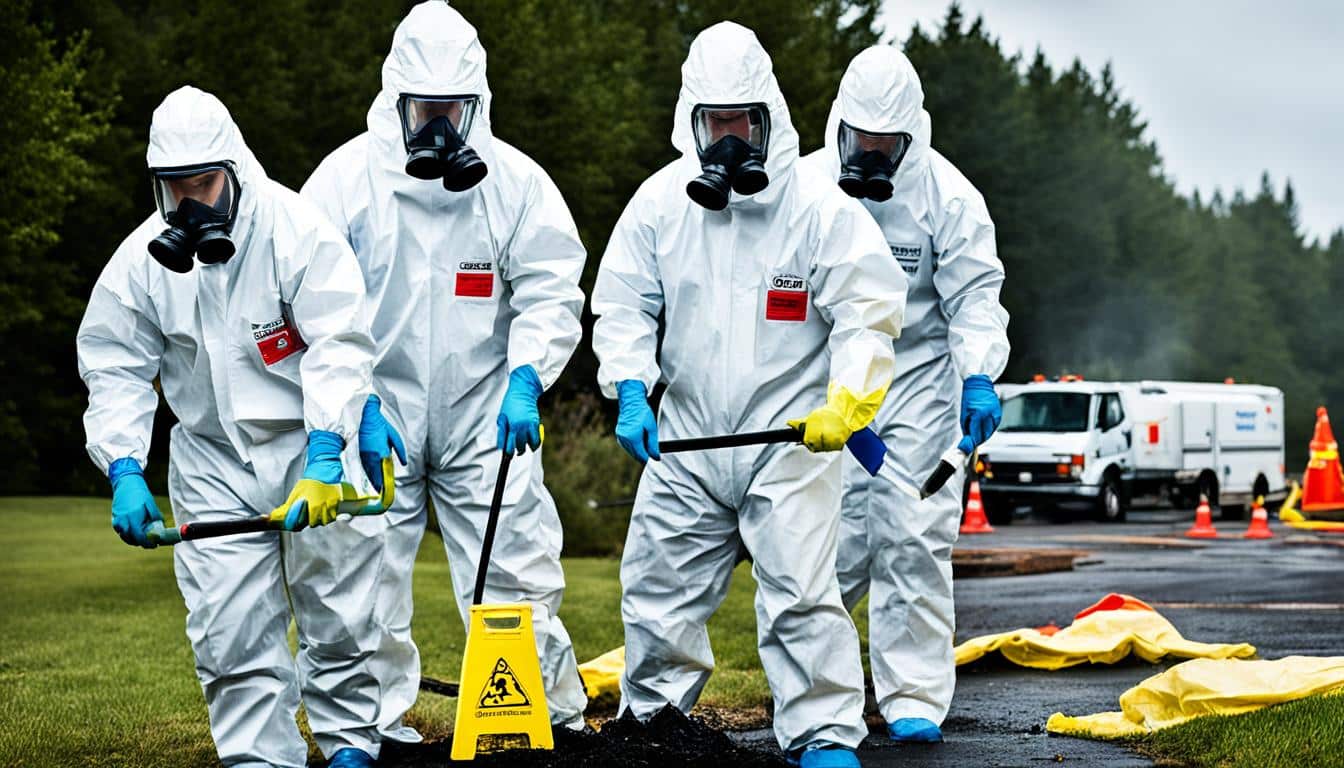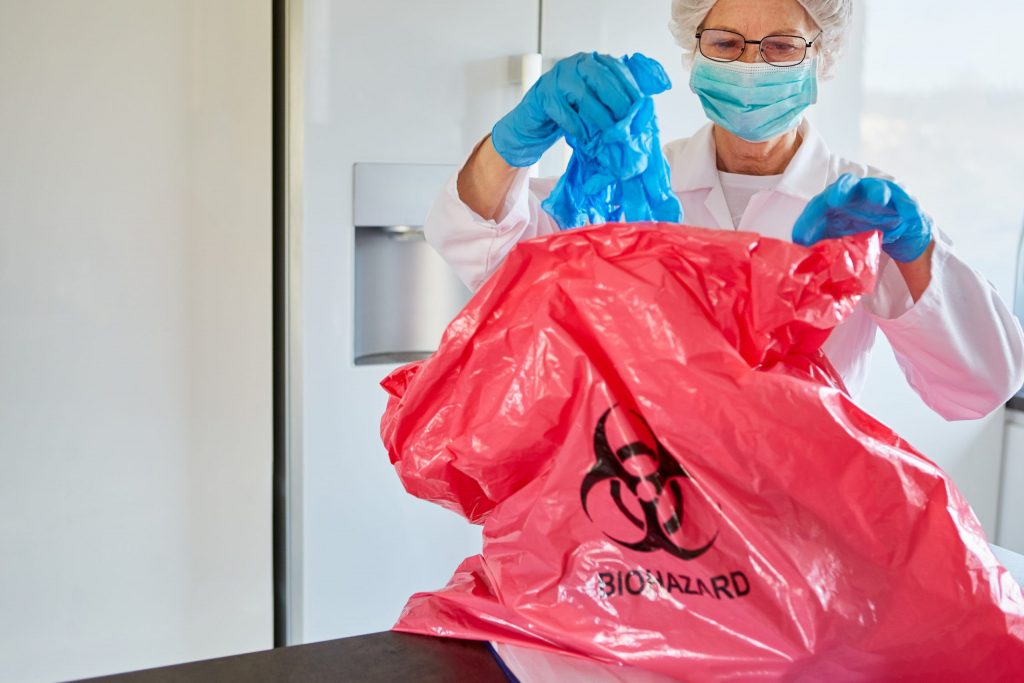Biohazard Removal: Safe Handling and Disposal of Hazardous Materials
Biohazard Removal: Safe Handling and Disposal of Hazardous Materials
Blog Article
Specialist Biohazard Cleansing and Decontamination for Blood, Bodily Fluids, and Hazardous Materials
The potential wellness threats associated with direct exposure to biohazards underscore the essential demand for precise handling and extensive cleanup. As we navigate the intricate landscape of biohazard cleaning, comprehending the nuances of policies, conformity, and the customized tools at play ends up being vital in making certain a risk-free and thorough decontamination process.
Wellness Dangers of Biohazard Exposure
Exposure to biohazards presents significant health dangers that can cause serious effects for neighborhoods and people alike. Biohazards include a vast array of biological compounds, including blood, physical liquids, mold, germs, infections, and various other potentially transmittable products. When individuals enter contact with these biohazards, whether through accidents, improper handling, or environmental exposure, they face the danger of contracting major health problems or diseases.
One of the key wellness threats connected with biohazard exposure is the transmission of infectious conditions. Bloodborne virus such as HIV, hepatitis B and C, and different germs can be existing in biohazardous materials, posturing a straight threat to human wellness. Breathing in airborne biohazards like mold and mildew spores or entering contact with infected surface areas can additionally lead to breathing problems, allergic reactions, and various other damaging health effects.
Moreover, biohazard exposure can have lasting health and wellness implications, with some conditions materializing years after the initial get in touch with (Blood Cleanup). As a result, it is essential to prioritize proper biohazard cleansing and purification to reduce these health threats and ensure the safety of people and communities

Specialized Educating for Biohazard Cleanup
When it concerns handling biohazard clean-up successfully and securely, specialized training plays a fundamental function in making certain correct decontamination treatments are adhered to. Biohazard clean-up requires particular knowledge and abilities to properly reduce threats related to bloodborne microorganisms, physical fluids, and hazardous materials. Experts learnt biohazard cleaning undergo extensive direction on how to securely manage, get rid of, and throw away biohazardous materials to protect against contamination and exposure.
Specialized training for biohazard cleaning covers a series of crucial topics, including correct individual protective tools (PPE) use, bloodborne microorganism recognition, decontamination methods, and unsafe waste disposal methods. Individuals learnt biohazard cleanup are equipped with the needed proficiency to analyze contamination levels, recognize possible threats, and implement appropriate clean-up procedures in compliance with regulative criteria.
Continuous training and education and learning are critical in the field of biohazard clean-up to stay upgraded on the current decontamination innovations, safety and security protocols, and policies. By spending in specialized training, biohazard cleanup professionals can efficiently react to emergency situation cleaning circumstances and protect both public health and the setting.
Value of Correct Decontamination Techniques
Using appropriate purification methods is crucial in biohazard cleanup to efficiently get rid of harmful products and minimize health risks. Effective decontamination not just makes certain the elimination of noticeable traces of blood, physical fluids, and other biohazards however also targets unnoticeable pathogens that might pose major health hazards otherwise appropriately eliminated. By following rigorous purification procedures, trained specialists can dramatically reduce the risk of direct exposure to dangerous bacteria, viruses, and germs that might lead to diseases or infections.
Correct purification methods involve the usage of customized devices and disinfectants that are particularly developed to counteract biohazards efficiently. Comprehensive cleaning and disinfection of polluted locations are vital to prevent the spread of virus and guarantee a safe atmosphere for occupants. Furthermore, the correct disposal of biohazardous waste adhering to decontamination treatments is essential in protecting against contamination of other surfaces or individuals.

Devices and Devices for Safe Cleaning
When dealing with blood, physical liquids, or dangerous materials, biohazard cleansing experts count on specialized equipment to reduce direct exposure risks and thoroughly sanitize the affected area. Additionally, biohazard cleansing kits consisting of disinfectants, absorptive products, and biohazard bags are made use of to safely dispose and contain of contaminated items.
Advanced learn the facts here now cleansing tools like hospital-grade disinfectants, HEPA-filtered vacuums, and misting equipments are employed to sanitize surfaces and remove biohazards properly. Specialized equipment such as sharps containers and biohazard garbage disposal bins are used to safely take care of sharp things and biohazardous waste materials. By making use of the ideal tools and tools, biohazard cleansing professionals can make sure a detailed clean-up process that focuses on safety and minimizes wellness threats for both workers and residents of the damaged space.
Laws and Compliance in Biohazard Cleansing
Appropriate adherence to laws and compliance requirements is paramount in biohazard cleansing to make sure the safety and security of both personnel and the setting. Federal government companies such as OSHA (Occupational Safety And Security and Health And Wellness Management) and the EPA (Environmental Defense Firm) have developed certain guidelines for biohazard cleaning procedures to minimize wellness risks and environmental contamination. These laws cover a variety of aspects consisting of the handling, transportation, and disposal of biohazardous products, along with the required training and protective tools needed for employees associated with the cleaning process.
Biohazard cleansing business should remain updated with these guidelines to assure that their procedures meet the needed safety and security standards. Failing to abide go with these laws can result in extreme consequences, consisting of fines, lawsuit, and threatening the health of people and the setting. By following rigid guidelines and compliance actions, biohazard cleaning companies can successfully reduce dangers and ensure a complete and secure clean-up procedure for all events entailed.
Final Thought
Finally, biohazard cleansing and decontamination need specialized training, proper methods, and adherence to policies. Exposure to blood, physical fluids, and harmful materials positions considerable health and wellness dangers, making it crucial to utilize the appropriate equipment and devices for risk-free clean-up. By adhering to rigorous procedures and guidelines, experts can properly minimize the threats related to biohazard exposure and guarantee the safety and security of both themselves and others.
As we browse the intricate landscape of biohazard cleanup, understanding the subtleties of regulations, conformity, and the specialized equipment at play comes to be necessary in guaranteeing a safe and extensive decontamination procedure. (Blood Cleanup)
When it comes to handling biohazard clean-up efficiently and safely, specialized training plays a basic function in making sure correct decontamination treatments are complied with.Utilizing proper purification methods is critical in biohazard clean-up to properly remove unsafe products and lessen health dangers. Furthermore, biohazard cleansing sets consisting of anti-bacterials, absorbing materials, and biohazard bags are utilized to safely get rid of and consist of of contaminated things.
Government firms such as OSHA (Occupational Safety and Health And Wellness Administration) and the EPA (Environmental Defense More hints Company) have developed certain guidelines for biohazard clean-up treatments to decrease health and wellness threats and environmental contamination.
Report this page